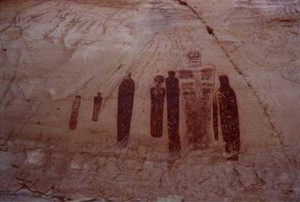I still haven’t recovered from the rude shock of hearing about the suicide of Chantal Akerman on October 6, 2015.
The following was originally published in Retrospektive Chantal Akerman, a publication of the Viennale/Austrian Filmmuseum, 2011, and the second issue of the online Lola (lolajournal.com), 2012. — J.R.

Does one’s integrity ever lie in what he is not able to do? I think that usually it does, for free will does not mean one will, but many wills conflicting in one man [sic]. — Flannery O’Connor
If I have a reputation for being difficult, it’s because I love the everyday and want to present it. In general people go to the movies precisely to escape the everyday. — Chantal Akerman
A yearning for the ordinary as well as the everyday runs through Akerman’s work like a recurring, plaintive refrain. It is a longing that takes many forms: part of it is simply her ambition to make a commercially successful movie; another part is the desire of a self-destructive, somewhat regressive neurotic — Akerman herself in Saute ma ville (1968), La chambre (1972), Je, tu, il, elle (1974), and L’homme à la valise (1983); Delphine Seyrig in Jeanne Dielman, 23 Quai de Commerce, 1080 Bruxelles (1975); Aurore Clement in Les rendez-vous d’Anna (1978); Circé Lethem in Portrait d’une jeune fille de la fin des années 60 à Bruxelles (1993) — to go legit and be like “normal” people. Read more
From the Chicago Reader (December 1, 1997). — J.R.

The ninth feature of experimental filmmaker James Benning (11 x 14, One Way Boogie Woogie, Landscape Suicide, Deseret) is one of his most ambitious and powerful. Four Corners takes as its jumping-off point the famous tourist spot where New Mexico, Arizona, Colorado, and Utah meet, but as a complex meditation on landscape, history, and painting, its subject is really the entire country (one of the longest passages deals with Milwaukee, where Benning grew up). The film examines four paintings by very dissimilar artists (Monet, Jasper Johns, a black man from Alabama, and a first-century Native American); presents biographical sketches of each painter; explores migration history, ethnic displacement, and conflicts in particular areas of Milwaukee or Four Corners; includes 13 fixed (and beautifully composed) shots of each area; and records two pieces of ethnic music (by a Navajo band and a prerap Harlem group). But Benning convinces us that nearly all these things are part of the same story, a politically potent one that brims with a sense of everyday life. (JR)
 Read more
Read more
This exercise in mainstream masochism, macho posturing, and designer-grunge fascism (1999) is borderline ridiculous. But it also happens to be David Fincher’s richest movie — not only because it combines the others (Alien3, Seven, The Game) with chunks of Performance, but also because it keeps topping its own giddy excesses. Adapted by Jim Uhls from Chuck Palahniuk’s novel, this has something — but only something — to do with a bored Edward Norton encountering a nihilistic doppelganger (Brad Pitt) who teaches him that getting your brains bashed out is fun. Though you’re barely allowed to disagree with him, your jaw is supposed to drop with admiring disbelief at the provocation, and the overall impression of complexity might easily be mistaken for the genuine article. In other words, this is American self-absorption at its finest. With Helena Bonham Carter, Meat Loaf, and Jared Leto. 139 min. (JR) Read more



